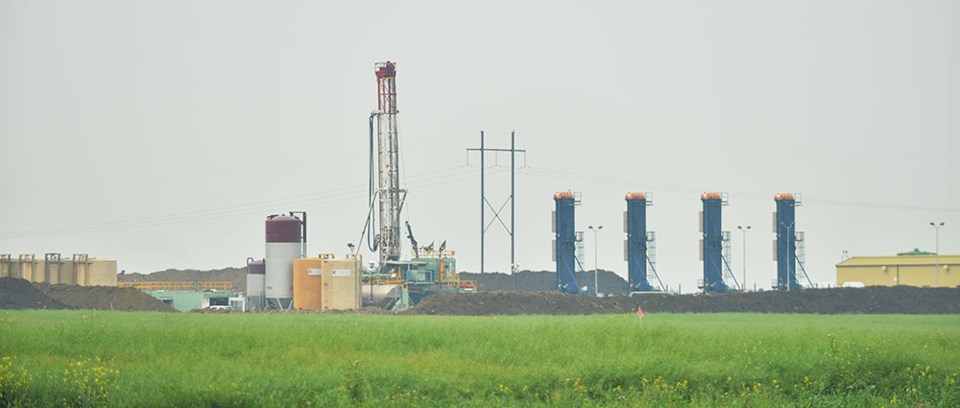Regina – Saskatchewan is producing roughly the same amount of oil, 501,000 bpd, with about 30 to 40 per cent fewer rigs at any given time compared to five to ten years ago. Pipeline News asked the Ministry of Energy and Resources what this means for Saskatchewan, and received this email response from Minister of Energy and Resources Bronwyn Eyre on Jan. 23.
Pipeline News: We’ve seen the drilling rig fleet in Canada drop from 811 about five years ago to 515 today. The Canadian Association of Oilwell Drilling Contractors thinks it could go closer to 400. Even with these reduced numbers, only half the fleet is working in Canada, during the busy season. PSAC recently forecast a 10 per cent reduction in wells for 2020, from 5,000 to 4,500. Yet Canadian oil production is growing and Saskatchewan oil production is relatively flat. Are rig counts and wells drilled the metrics we should be using today?
Bronwyn Eyre: As of mid-January, 57 of 105 oil rigs were working, which is a utilization rate of 54 per cent, compared to Alberta’s 48 per cent and BC’s 45 per cent. Even though drilling numbers remain depressed for Western Canada, oil production is still growing due to oil sands production and increases in technology that drive production, independent of numbers of wells drilled—for example, waterflood projects, Saskatchewan steam assisted gravity drainage (SAGD) projects and other types of enhanced oil recovery (EOR) projects. Rig counts and wells drilled are still important metrics, however, for production levels, employment and capital investment.
P.N.: What metrics should we be using, going forward? Is metres drilled now king, over well count or rigs working? Or should we just look at final production numbers?
Eyre: All these metrics are important factors when looking at the oil industry and should all be considered when reviewing the state of the oil industry in Saskatchewan, but the number of waterflood and EOR projects planned impact overall investment and production levels as well. For instance, CAPP’s data include investment in EOR. Our government also has set targets in Saskatchewan’s Growth Plan: The Next Decade of Growth 2020-2030, one of which is growing oil production to 600,000 bpd by 2030.
P.N.: In Saskatchewan, six to ten years ago, we would see around 100-105 rigs working. Today, it’s 65. Yet we’re producing roughly the same amount of oil. Can you explain what this means, from a government perspective?
Eyre: Oil well drilling over the last couple of years became more efficient with the move to longer horizontal sections and continued optimization of fracs, including the re-fracking of existing wells. The trend is similar to the initial move from vertical wells to horizontal wells, where one horizontal well could be drilled instead of multiple vertical wells, leading to fewer overall wells being drilled to produce the same amount of oil. We are seeing a greater emphasis on secondary (such as waterflood) and tertiary recovery (such as SAGD) which require fewer new wells to be drilled to produce the same amount of oil and an increase in the number of wells being converted to injection for the purpose of waterflooding the reservoir. Saskatchewan’s Waterflood Development Program (WDP) was established in December, 2019 to encourage the conversion of these injection wells, and the program started taking applications in December.
P.N.: There are hundreds of racked rigs, dozens of which are in Saskatchewan, many of which have been that way over five years. Do you expect any of those rigs to work again?
Eyre: Our Government is hopeful that all of these rigs will be working again. The government has introduced programs such as the Saskatchewan Oil and Gas Processing Investment Incentive (OGPII), the Saskatchewan Petroleum Innovation Incentive (SPII) and the Waterflood Development Program (WDP) to help spur investment in the province, in addition to our stable and competitive royalty regime.
P.N: Is there anything you would like to add?
Eyre: Saskatchewan remains one of the top destinations in North America for high return oil production investment across many different plays and grades of oil; the Growth Plan’s oil production target and its many related commitments show that the Government of Saskatchewan is focused on taking steps to continue to help the sector develop and flourish.
For example: The Scotiabank 2019 Playbook – A Ranking North America’s Oil and Gas Plays, ranked Southeast Saskatchewan’s Mission Canyon Frobisher/Alida oil play as the No. 1 oil or gas play in North American based upon its leading metric of Profit Investment Ratio. Saskatchewan has two of the top 20 ranked plays in 2019 (Southeast Saskatchewan Mission Canyon Frobisher/Alida No. 1 and Southwest Saskatchewan Cantuar No. 7) compared to of the top 20 plays in 2018 Playbook.
Saskatchewan has seven plays in the top 35 in the 2019 Playbook.



